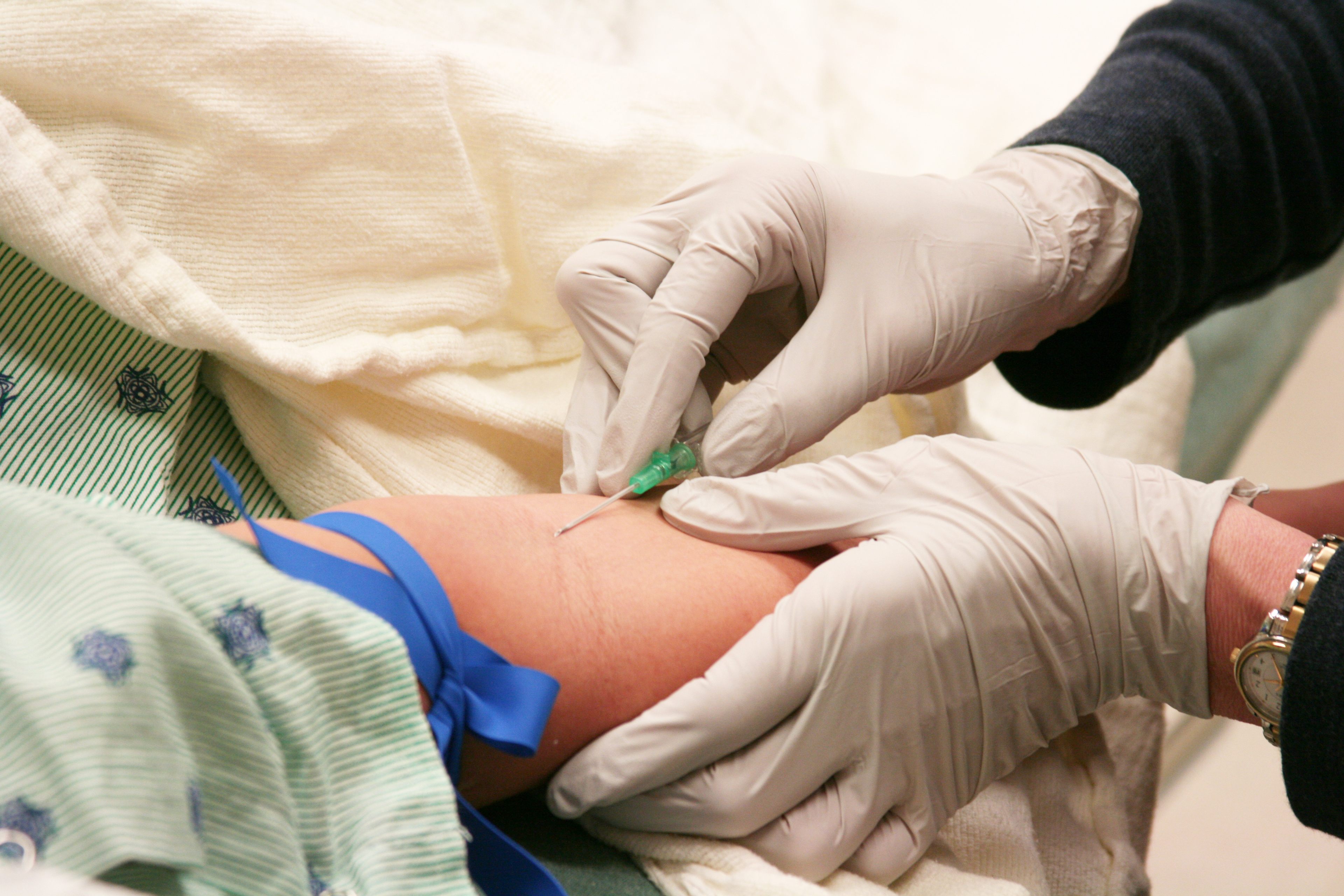
BGSU pioneering research that could dramatically improve outcomes for long-term hospital patients
Estimated Reading Time: 4 minutes
BGSU researchers believe their developed material can overcome the ‘burst’ that has made nitric oxide challenging to use therapeutically
By Nick Piotrowicz
Researchers at Bowling Green State University are developing an innovative polymeric material to control the release of nitric oxide for therapeutic uses, which could present an attractive alternative to antibiotics.
Funded by a $434,357 National Institutes of Health grant and in collaboration with researchers at the University of Georgia, BGSU chemistry professors Dr. Joe Furgal and Dr. Alexis Ostrowski are studying ways to practically implement nitric oxide in medical settings, which could dramatically improve outcomes for patients.
If controlled, nitric oxide has the propensity to cut down infections and clotting, two major issues for patients undergoing long-term care.
“Essentially, you can limit secondary infections from occurring, which, sadly enough, are one of the leading causes of death in hospitals,” Furgal said. “Bacteria do not seem to ever gain any resistance to nitric oxide the way they do with antibiotics.”
Healthcare Associated Infections (HAIs) are a major concern for doctors, nurses and patients, especially those in long-term care.
According to data from the Centers for Disease Control and Prevention, HAIs account for about 1.7 million infections and lead to nearly 100,000 deaths per year in just the United States.
During the course of treating an illness or condition, secondary infections like C.diff, catheter-related bloodstream infections or MRSA can prove fatal.
Similarly, for patients who need intravenous therapy, thrombosis – blood clots blocking arteries or veins – is a persistent concern.
Nitric oxide, however, can address both issues.
“If you take diabetes, for example, needles normally have to be changed every day because of concern about blood clots,” Furgal said. “Nitric oxide helps dilate your veins and keeps that type of coagulation from occurring at those needle sites. Nitric oxide not only acts as a vasodilator, it’s also anti-microbial – so it can prevent both infection and the coagulation issues you’re looking to avoid.”
Furgal’s lab is developing silicon-based polymeric materials used in the research, while Ostrowski’s lab is completing the preliminary nitric oxide release studies.
With these data, co-researchers at Georgia are studying the effects on live cells.
Previously, nitric oxide has been challenging to use in medical settings because its release is tricky to control.
The gas easily interacts with fluids, so keeping its release at the consistent, desired level has proven difficult.
“One of the big challenges with nitric oxide release is that it’s attached to polar molecules – which means that bodily fluids are going to interact with it quite readily,” Furgal said. “If there’s a lot of fluid interaction, it means you’re going to take the nitric oxide off pretty easily.”
Furgal’s team hopes to have found the key to overcoming this issue by changing polymer molecules to make them more hydrophobic, thereby allowing them to control its release.
By creating silicone-oxygen structures – essentially cubes with eight corners that can attach to anything silicone like tubing or coated needles – they are preventing the gas from readily interacting with fluids.
“We’re basically making ‘cages’ that hang off the silicone and hide the nitric oxide behind some hydrophobic molecules,” said Kyle Hallowell ’09, ’21, a doctoral student in Furgal’s lab. “When saline or any other liquid is flushed through tubing, it’s not going to catch all the nitric oxide. We can prevent the burst by changing the duration of how long it is released.”
The next step for the research team is to obtain patents for the material development, which is showing significant promise.
Nitric oxide, if controlled, has broad uses in the medical field, and a silicone-friendly application fits easily within hospital settings.
“We can take an anti-microbial molecule that is beneficial to healing and attach it to anything with silicone – which can go from coatings on any flat surface to IV tubing to wound packs,” Hallowell said. “In medical settings, if you can keep something anti-microbial and anti-bacterial for a longer term, you’re all for it.”
Prior applications of nitric oxide for medical uses often saw an initial burst of too much nitric oxide followed by a level inadequate to be therapeutic.
No existing materials have curtailed the initial burst of nitric oxide, but the BGSU researchers believe they have a path forward to solving the issue.
“The problem is you have an initial ‘burst’ that is too high, then your long-term flux is not high enough,” Furgal said. “You give off too much too quickly, then you have a level that lasts, but isn’t therapeutic. The ‘burst’ is the issue, and this is what’s difficult to overcome.
“But so far, we’ve seen initial success with this.”
Related Stories
Media Contact | Michael Bratton | mbratto@bgsu.edu | 419-372-6349
Updated: 07/26/2024 08:56AM




